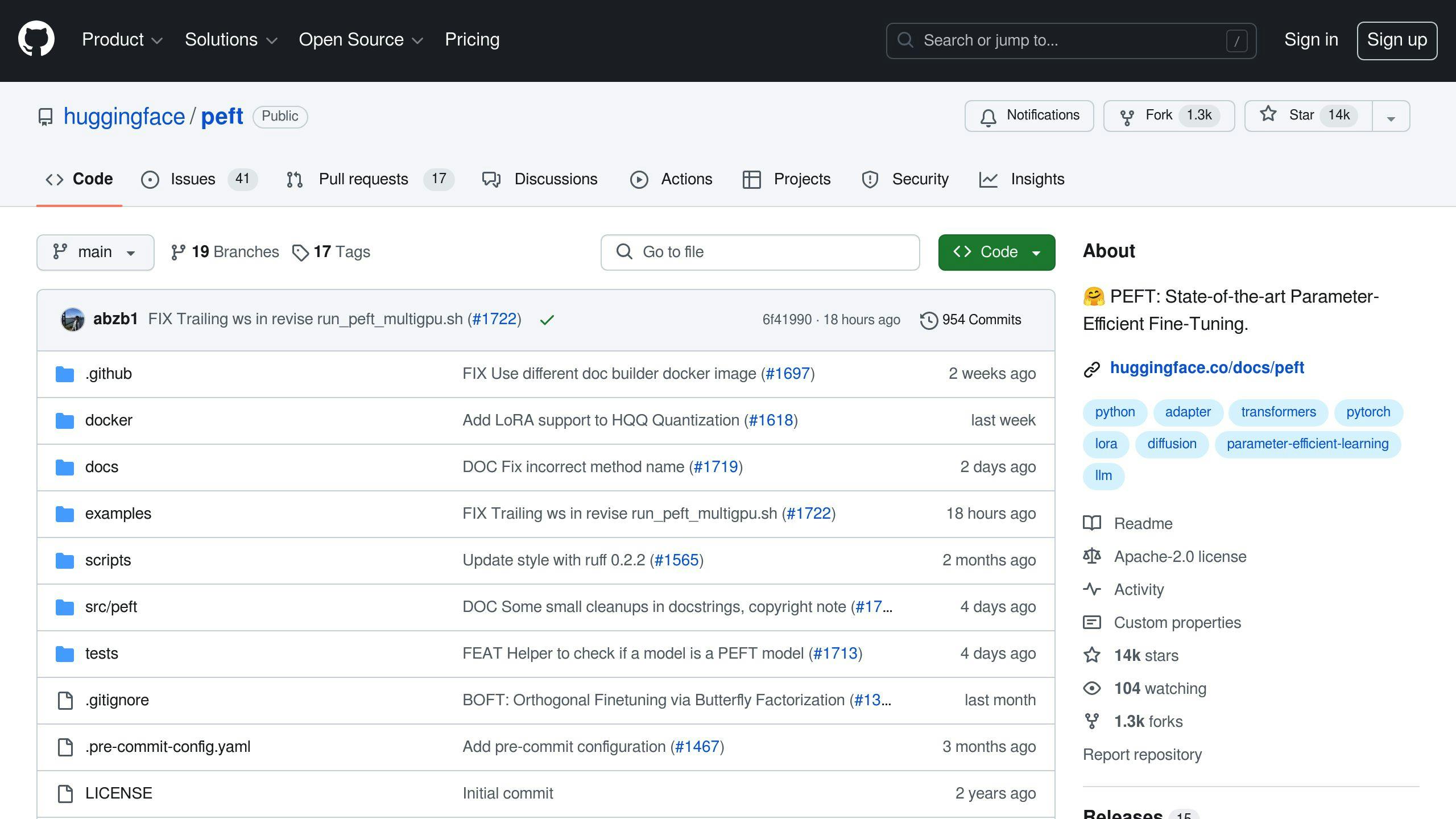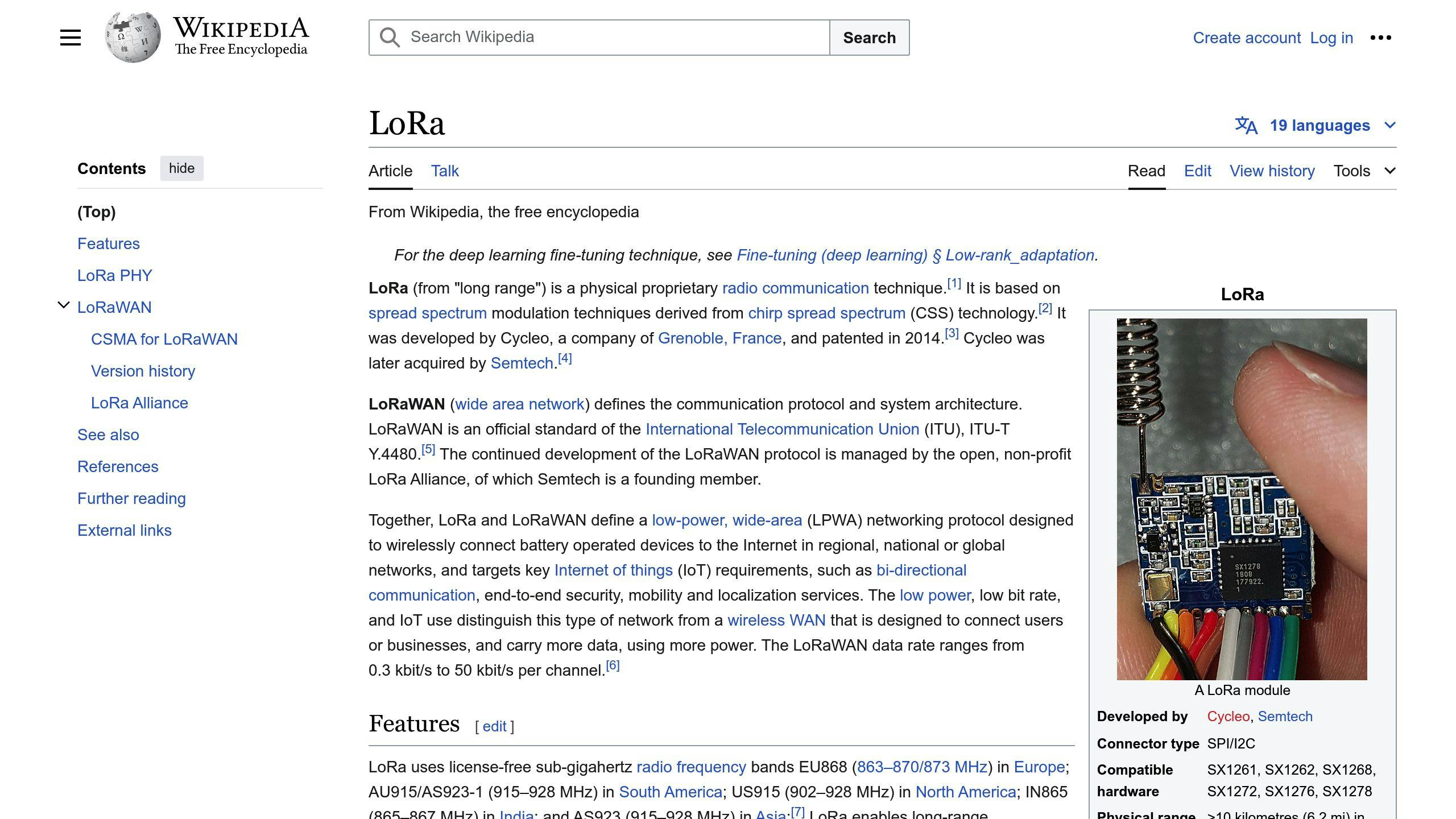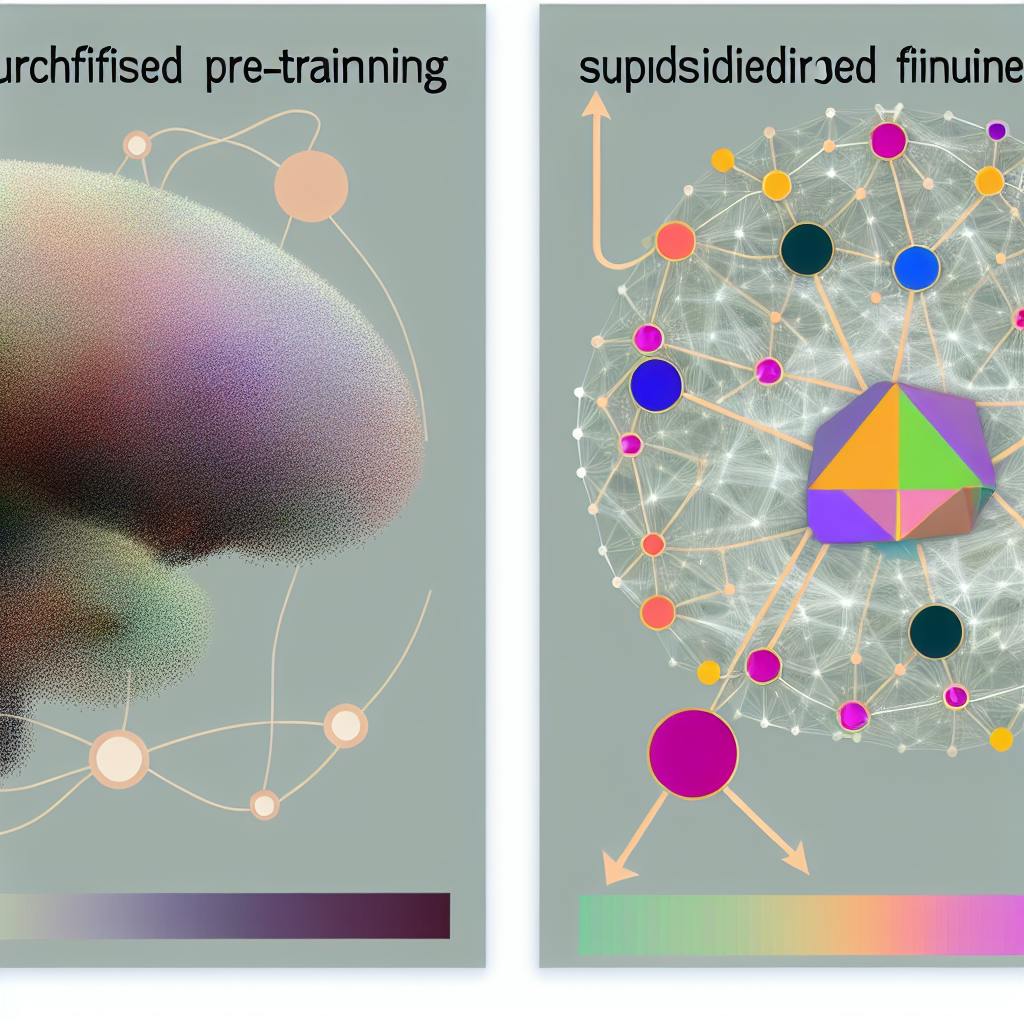Fine-tuning Large Language Models (LLMs) with human input, known as Human-in-the-Loop (HITL), is a technique that enhances model performance by training LLMs on task-specific data with human feedback. This guide covers:
Key Benefits:
- More accurate and relevant outputs
- Improved performance on specific tasks
- Reduced bias and higher output quality
- Adaptability to changing requirements
Fine-Tuning Challenges:
| Challenge | Solution |
|---|---|
| Data quality/quantity issues | Curate high-quality data, augment limited data |
| Overfitting and generalization | Regularization, early stopping, hyperparameter tuning |
| Computational resources | Model distillation, efficient architectures |
Prompt Engineering:
- Customizes LLMs for specific tasks with minimal fine-tuning
- Provides relevant examples and instructions in input prompts
- Offers reduced computational overhead and rapid prototyping
Best Practices:
- High-quality, diverse training data
- Hyperparameter tuning (grid search, random search, Bayesian optimization)
- Proper model selection and modification
HITL Process:
- Data collection
- Model fine-tuning
- Human feedback
- Model refining
Advanced HITL Methods:
| Method | Description |
|---|---|
| RLHF | Reduces bias by aligning outputs with human values |
| PEFT | Resource-efficient fine-tuning by modifying a subset of parameters |
| LoRA | Adapts models by modifying low-ranking parameters |
Challenges and Limitations:
- Data quality and diversity
- Ethical considerations (individual biases, values)
- Scalability and resource constraints
- Potential for unintended behaviors
- Consistency and reproducibility issues
Future Outlook:
- Improved data collection and annotation
- Robust evaluation frameworks
- Ethical AI frameworks
- Hybrid approaches (e.g., unsupervised learning, transfer learning)
- Domain-specific fine-tuning methodologies
HITL fine-tuning offers a powerful way to enhance LLM performance and adaptability, but it requires careful consideration of data quality, ethical implications, and resource management. As the field evolves, we can expect more specialized, capable, and trustworthy LLMs that positively impact various domains.
Related video from YouTube
Challenges in Fine-Tuning LLMs
Fine-tuning Large Language Models (LLMs) can be a complex task. Several obstacles can arise during the fine-tuning process, hindering the model's performance and accuracy. In this section, we will discuss some common challenges encountered when fine-tuning LLMs and explore strategies to overcome them.
Data Quality and Quantity Issues
One of the primary challenges in fine-tuning LLMs is sourcing high-quality and relevant training data. The quality of the training data directly impacts the model's performance, and low-quality data can lead to suboptimal results. Moreover, the quantity of data is also crucial, as LLMs require a substantial amount of data to learn effectively. Data scarcity can lead to overfitting, where the model becomes too specialized to the training data and fails to generalize well to new, unseen data.
| Challenge | Solution |
|---|---|
| Low-quality data | Curate and filter the data to ensure it is relevant, accurate, and diverse. |
| Limited data | Augment the training data by generating additional data from the existing data. |
Overfitting and Generalization
Overfitting is another common challenge in fine-tuning LLMs. When a model is overfitting, it becomes too specialized to the training data and fails to generalize well to new, unseen data. This can occur when the model is too complex or when the training data is limited.
| Technique | Description |
|---|---|
| Regularization | Reduces the model's complexity to prevent overfitting. |
| Early stopping | Stops the training process when the model's performance on the validation set starts to degrade. |
| Hyperparameter optimization | Tunes the model's hyperparameters to find the optimal combination that prevents overfitting. |
Computational Resource Management
Fine-tuning LLMs can be computationally expensive, requiring significant resources and infrastructure. This can be a challenge, especially for organizations with limited resources.
| Alternative | Description |
|---|---|
| Model distillation | Trains a smaller model to mimic the behavior of a larger, pre-trained model. |
| Efficient architectures | Designs models that are computationally efficient and require fewer resources. |
By understanding and addressing these challenges, developers and practitioners can fine-tune LLMs more effectively, achieving better performance and accuracy in their AI applications.
Prompt Engineering for Fine-Tuning
Prompt engineering is a technique that allows developers to customize Large Language Models (LLMs) for specific tasks without extensive fine-tuning. By crafting input prompts, developers can guide the model's output and behavior, enabling task-specific customization while reducing computational overhead and data requirements.
Task-Specific Customization
Prompt engineering enables LLMs to adapt to specific tasks or domains with minimal fine-tuning. By providing relevant examples, context, and instructions within the input prompt, the model can leverage its pre-trained knowledge to generate outputs tailored to the desired task.
Benefits of Prompt Engineering
| Benefit | Description |
|---|---|
| Reduced computational overhead | Fine-tuning LLMs can be computationally intensive, while prompt engineering is a less resource-intensive process. |
| Rapid prototyping and iteration | Prompt engineering facilitates rapid experimentation with different prompts, allowing developers to quickly observe the model's responses. |
| Interpretability and control | Well-designed prompts can guide the model to generate outputs that align with specific requirements, such as tone, style, or format. |
While prompt engineering offers several advantages, it is often used in conjunction with fine-tuning techniques to achieve optimal performance. By combining the strengths of both approaches, developers can create AI applications that are tailored to specific tasks, computationally efficient, and capable of delivering accurate and relevant outputs.
Best Practices for Fine-Tuning LLMs
Fine-tuning Large Language Models (LLMs) requires careful consideration of several critical factors to achieve accurate and reliable outcomes. In this section, we will outline the best practices for fine-tuning LLMs, including data curation, model selection, iterative training, validation, and the importance of continuous refinement.
High-Quality Data
High-quality data is essential for fine-tuning LLMs. The quality of the training dataset directly impacts the model's performance and bias. A well-curated dataset should be representative of the task at hand, diverse, and free from noise and errors.
Data Curation Checklist
| Step | Description |
|---|---|
| Collect diverse data | Gather data from various sources to minimize bias |
| Clean and preprocess data | Remove noise and errors from the dataset |
| Annotate data | Add relevant labels and metadata to the dataset |
| Split data | Divide data into training, validation, and testing sets |
Hyperparameter Tuning
Hyperparameters play a critical role in fine-tuning LLMs. Learning rate, batch size, and number of epochs are some of the most important hyperparameters that require careful tuning.
Hyperparameter Tuning Strategies
| Technique | Description |
|---|---|
| Grid search | Try multiple combinations of hyperparameters to find the best one |
| Random search | Randomly sample hyperparameters to find the best one |
| Bayesian optimization | Use Bayesian methods to find the optimal hyperparameters |
Model Selection and Modification
Selecting the right pre-trained LLM and modifying it for the specific task at hand is crucial for fine-tuning.
Model Selection and Modification Tips
| Tip | Description |
|---|---|
| Choose a relevant model | Select a pre-trained model that aligns with the task requirements |
| Modify the model architecture | Adapt the model to incorporate task-specific knowledge |
| Use transfer learning | Leverage pre-trained models to fine-tune for the new task |
By following these best practices, developers can fine-tune LLMs that are accurate, reliable, and adaptable to specific tasks. Remember, fine-tuning is an iterative process that requires continuous refinement and evaluation to achieve optimal results.
sbb-itb-f3e41df
Using Human Feedback for Fine-Tuning
Fine-tuning Large Language Models (LLMs) with human feedback, also known as Human-in-the-Loop (HITL), is a powerful approach to improve model performance and reliability. By incorporating human input into the fine-tuning process, developers can create more accurate models that better serve specific tasks.
The HITL Process
The HITL process involves the following steps:
1. Data Collection: Gathering a dataset relevant to the task at hand, which will be used to fine-tune the LLM. 2. Model Fine-Tuning: Fine-tuning the pre-trained LLM on the collected dataset using a suitable optimization algorithm. 3. Human Feedback: Human evaluators provide feedback on the model's output, rating its performance and suggesting improvements. 4. Model Refining: The model is refined based on the human feedback, adjusting its parameters to better align with the desired output.
Benefits of HITL Fine-Tuning
The HITL approach offers several benefits, including:
| Benefit | Description |
|---|---|
| Improved Model Performance | Human feedback helps to identify and correct errors, leading to more accurate models. |
| Reduced Bias | HITL fine-tuning can reduce bias in LLMs by incorporating diverse human perspectives and feedback. |
| Enhanced Transparency | The HITL process provides a clear understanding of how the model is making predictions, enabling more informed decision-making. |
By leveraging human feedback in the fine-tuning process, developers can create more effective and reliable LLMs that better serve specific tasks and applications.
Advanced HITL Fine-Tuning Methods
This section explores advanced fine-tuning techniques that leverage human feedback, including RLHF, PEFT, and LoRA, and how they contribute to the refinement of LLMs.
Reducing Bias with RLHF

Reinforcement Learning from Human Feedback (RLHF) is a fine-tuning method that helps LLMs learn from human feedback and adapt to specific tasks. By incorporating human feedback into the training process, RLHF reduces bias in LLMs by aligning their outputs with ethical guidelines and human values.
How RLHF Works
| Step | Description |
|---|---|
| 1. Human Feedback | Human evaluators provide feedback on the model's output, rating its performance and suggesting improvements. |
| 2. Reward Function | A reward function is designed to reflect human preferences and values. |
| 3. Model Training | The LLM is trained to maximize the reward function, learning to generate outputs that are accurate and fair. |
Resource-Efficient Fine-Tuning with PEFT

Parameter-Efficient Fine-Tuning (PEFT) is another advanced fine-tuning method that enables efficient and effective fine-tuning of LLMs. PEFT involves adapting a pre-trained LLM to a specific task by modifying only a small subset of its parameters.
PEFT Benefits
| Benefit | Description |
|---|---|
| Reduced Computational Resources | PEFT requires fewer computational resources, making it more efficient and cost-effective. |
| Faster Fine-Tuning | PEFT fine-tunes LLMs faster than traditional methods, reducing the time and effort required. |
LoRA and Other Strategies

Low-Ranking Adaptation (LoRA) is a fine-tuning strategy that involves adapting a pre-trained LLM to a specific task by modifying its low-ranking parameters. Other strategies, such as AdapterHub and BitFit, also exist.
Fine-Tuning Strategies
| Strategy | Description |
|---|---|
| LoRA | Adapts a pre-trained LLM to a specific task by modifying its low-ranking parameters. |
| AdapterHub | Adapts pre-trained LLMs to specific tasks by modifying their adapter modules. |
| BitFit | Adapts pre-trained LLMs to specific tasks by modifying their bit-level representations. |
In conclusion, advanced HITL fine-tuning methods, such as RLHF, PEFT, LoRA, and other strategies, offer powerful tools for refining LLMs and improving their performance on specific tasks. By leveraging human feedback and adapting to specific tasks, these methods enable LLMs to learn from human values and preferences, reducing bias and improving their overall performance.
Challenges and Limitations of HITL
Fine-tuning Large Language Models (LLMs) with human input, also known as Human-in-the-Loop (HITL), is a powerful approach to improve model performance and reduce biases. However, it also presents several challenges and limitations that must be carefully addressed:
Data Quality and Diversity
The quality and diversity of the data used for HITL fine-tuning are critical factors that can significantly impact the model's performance. If the data is biased, incomplete, or lacks diversity, the fine-tuned model may perpetuate or amplify these biases, leading to unfair or discriminatory outputs.
| Challenge | Description |
|---|---|
| Biased data | Fine-tuned models may perpetuate biases in the data, leading to unfair outputs. |
| Incomplete data | Incomplete data may lead to models that are not representative of the task at hand. |
| Lack of diversity | Data lacking diversity may result in models that are not adaptable to new situations. |
Ethical Considerations
Incorporating human feedback into the fine-tuning process raises ethical concerns regarding the potential influence of individual biases, values, and perspectives.
| Concern | Description |
|---|---|
| Individual biases | Human evaluators may introduce biases, which can be amplified through the fine-tuning process. |
| Values and perspectives | The subjective nature of human evaluations can inadvertently introduce biases. |
Scalability and Resource Constraints
HITL fine-tuning can be resource-intensive, requiring significant computational power and human effort.
| Constraint | Description |
|---|---|
| Computational power | HITL fine-tuning requires significant computational resources. |
| Human effort | Human evaluators are needed to provide feedback, which can be time-consuming and costly. |
Potential for Unintended Model Behaviors
Despite the best efforts to ensure the quality and diversity of the data and the ethical considerations, there is always a risk of unintended model behaviors emerging during the fine-tuning process.
| Risk | Description |
|---|---|
| Unpredictable behavior | LLMs are complex systems, and their behavior can be difficult to predict or control. |
| Unintended consequences | Fine-tuned models may exhibit unintended behaviors, leading to unforeseen consequences. |
Consistency and Reproducibility
Ensuring consistency and reproducibility in HITL fine-tuning can be challenging due to the subjective nature of human evaluations.
| Challenge | Description |
|---|---|
| Subjective evaluations | Human evaluators may have varying interpretations and biases, leading to inconsistent feedback. |
| Lack of standardization | The absence of standardized evaluation protocols can make it difficult to ensure consistency and reproducibility. |
By acknowledging and proactively addressing these challenges and limitations, researchers and practitioners can work towards developing more robust, ethical, and effective HITL fine-tuning methodologies for LLMs, ultimately enabling these powerful models to better serve society while mitigating potential risks and unintended consequences.
Summary and Future Outlook
Fine-tuning Large Language Models (LLMs) with human input, also known as Human-in-the-Loop (HITL), is a powerful technique that can significantly enhance the performance and capabilities of these models. By leveraging human feedback and expertise, HITL fine-tuning allows LLMs to learn and adapt to specific tasks, domains, and user preferences, ultimately leading to more accurate, relevant, and trustworthy outputs.
Benefits and Challenges
While HITL fine-tuning presents several benefits, such as improved model performance and adaptability, it also raises challenges, including:
| Challenge | Description |
|---|---|
| Data quality and diversity | Ensuring high-quality and diverse data for fine-tuning |
| Ethical considerations | Addressing potential biases and ensuring responsible AI development |
| Scalability and resource constraints | Managing computational resources and human effort |
Future Directions
Looking ahead, the future of HITL fine-tuning holds exciting possibilities. Some potential areas of development include:
| Area | Description |
|---|---|
| Improved data collection and annotation methods | Leveraging crowdsourcing platforms and automated data collection techniques |
| Robust evaluation frameworks | Developing standardized evaluation protocols and metrics |
| Ethical AI frameworks | Integrating ethical principles and guidelines into the HITL fine-tuning process |
| Hybrid approaches | Combining HITL fine-tuning with other techniques, such as unsupervised learning and transfer learning |
| Domain-specific fine-tuning | Tailoring HITL fine-tuning methodologies to specific domains, such as healthcare and finance |
As HITL fine-tuning continues to evolve, we can expect to see LLMs become increasingly specialized, capable, and trustworthy, enabling a wide range of applications that can positively impact various aspects of our lives. However, it is crucial to approach this technology with caution and responsibility, ensuring that ethical considerations, fairness, and transparency remain at the forefront of development efforts.
FAQs
How to Fine-Tune an LLM Model?
Fine-tuning an LLM model involves the following steps:
| Step | Description |
|---|---|
| 1 | Obtain a task-specific dataset |
| 2 | Preprocess the data |
| 3 | Initialize with pre-trained weights |
| 4 | Fine-tune on the dataset |
| 5 | Evaluate performance |
| 6 | Iterate and refine |
When to Fine-Tune LLMs?
Fine-tuning LLMs is beneficial in the following scenarios:
| Scenario | Description |
|---|---|
| Task specialization | Optimize the model for a specific task |
| Domain adaptation | Adapt the model to a specialized domain |
| Data privacy | Use a limited, proprietary dataset |
| Performance boost | Improve the model's performance on a specific task |
What is an Example of Human-in-the-Loop?
Human-in-the-loop (HITL) fine-tuning involves human feedback and corrections to an LLM's outputs. For example:
- In the medical domain, medical professionals provide feedback on an LLM's diagnoses or treatment recommendations.
- In content moderation, human reviewers provide feedback on an LLM's generated text, flagging inappropriate or harmful content.
This human input is used to fine-tune the model, enabling it to learn from expert knowledge and improve its performance.

